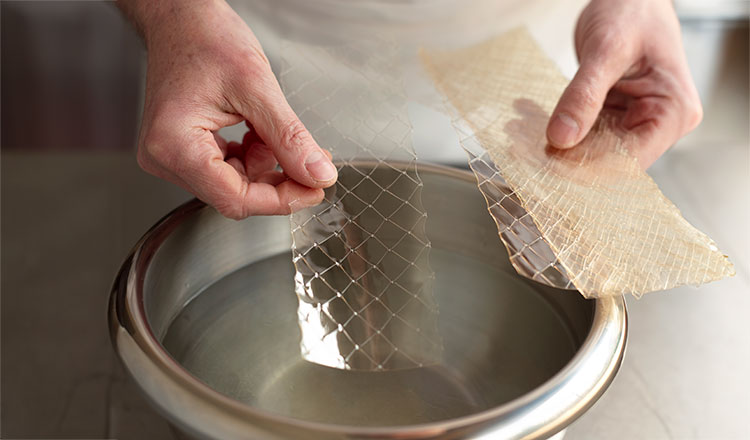While we may be more familiar with powdered (granulated) gelatin found in a box at every grocery store, our greater access to professional recipes and techniques means the introduction of some unfamiliar ingredients—including the form of gelatin most found in professional bakeshops: sheet gelatin, sometimes called leaf gelatin.
Sheet gelatin, which comes in sheets rather than powdered, as the name suggests, is used in the same way as the granulated gelatin we’re accustomed to. It is favored by professional pastry chefs for its precision, ease of use, and smooth results, free of clumps that can form when using powdered gelatin (it also makes great paned windows for gingerbread houses!).
There are four types of sheet gelatin: platinum, gold, silver, and bronze. Each has a different bloom strength, ranging between 160 to 240. The higher the bloom strength, the stronger the final gel will be. The manufacturer standardizes them by making the higher bloom sheets weigh less than the lower bloom sheets. Therefore, any sheet can be substituted for another, as long as the same number of sheets is used.
To hydrate, or bloom, sheet gelatin, place the sheets in a bowl with very cold water (enough to cover the sheets). The sheets should be fully bloomed in 4 to 5 minutes. Remove the sheets from the water and drain, without squeezing out the excess water. If you leave the gelatin in the water for too long (or if the water is not cold enough), the sheets will dissolve. After the gelatin is properly bloomed, it can be melted over a double boiler and added to the recipe.


Unless you are a glutton for formulas and math, there is no reason to substitute powdered gelatin for sheet gelatin, or vice versa. Use what is called for in the recipe for best results.


